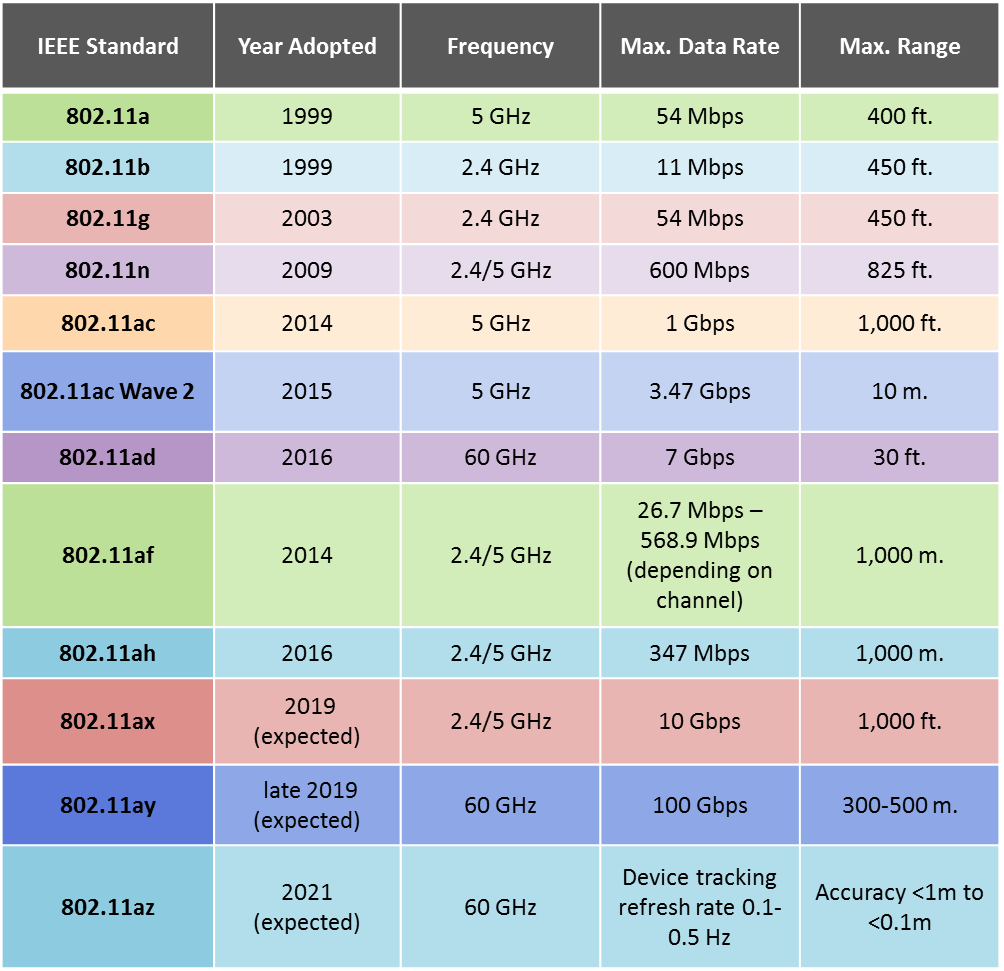WiFi has evolved in recent years with the introduction of 802.11ad and 802.11ax (now called WiFi 6). THe latter is now official, and in the last year several 802.11ax chipsets and WiFi 6 routers have been announced, but I’ve not heard much about 802.11ad with claims of up to 7Gbps bandwidth at 60 GHz when unveiled in 2016.
The latter have been supplanted by 802.11ay, with Qualcomm having just unveiled QCA64x8 and QCA64x1 802.11ay chipsets capable of delivering 10Gbps and operating at a frequency of 60 GHz. According to Wikipedia, 802.11ay is not really a new standard, but just an evolution of 802.11ad adding four times the bandwidth and up to 4 MIMO streams.
Qualcomm chipsets will enable 10+ Gps speeds with wire-equivalent latency, while keeping the power consumption low, and bring the ability to play 4K UltraHD videos over WiFi, virtual / augmented reality games, fixed wireless mesh backhaul, and other applications requiring high bandwidth and/or low-latency.

The table above even shows that in theory 100 Gpbs is achievable with 802.11ay, and range is pretty good at 300 to 500 meters. However considering the solution works at 60 Ghz, the signal won’t go through walls, and that range will mostly be useful for wireless mesh backhaul.
60 GHz WiFi also brings sensing applications with proximity and presence detection, gesture recognition, room mapping, and facial feature detection.
Four parts are available today: QCA6438 and QCA6428 for infrastructure and fixed wireless access, and the QCA6421 and QCA6431 for mobile applications. Facebook has made use of QCA6438 and QCA6428 chipsets in order to deliver high-speed internet connectivity with Facebook’s Terragraph technology aiming at solving the urban bandwidth challenge.

Jean-Luc started CNX Software in 2010 as a part-time endeavor, before quitting his job as a software engineering manager, and starting to write daily news, and reviews full time later in 2011.
Support CNX Software! Donate via cryptocurrencies, become a Patron on Patreon, or purchase goods on Amazon or Aliexpress




